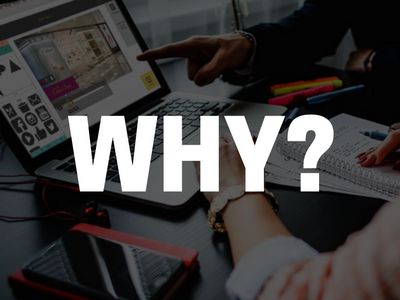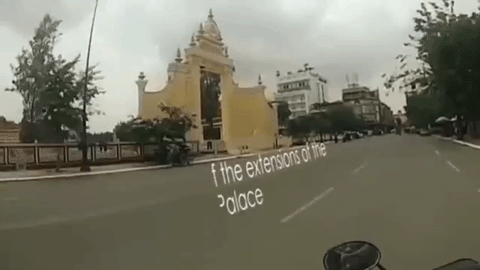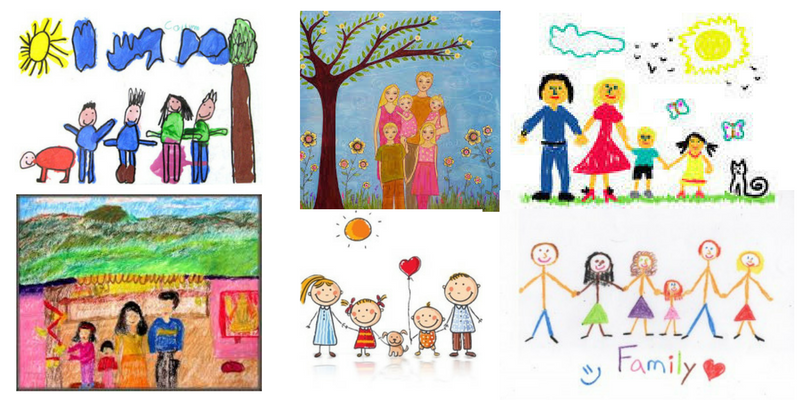Why We Are Building Typito

"People don't buy what you do; they buy why you do it." - Simon Sinek (Start With Why)
"This is great! How much time did you take to add these graphics to the video?"
"This is easily 4 hours of focused work."
"Will I be able to do this with the help of some tutorials?"
" It's tough😅 . Even some of the best video editors in the market don't understand how to create magic with text and graphics on videos. You could find an after-effects free template on the internet which could really make the video special. But without understanding the science of typography, that fancy effect could fall flat when you add text. You know I've been working on this for a few years now and just doing this bit of typography took me a considerable amount of time."
"Haha. Got it. Thanks a lot, Prijith!"

This is one of the effects Prijith added with the script and video I gave him. He's awesome.
Cambodian Connection
This discussion happened in early 2015. It was a year after I went backpacking to Cambodia. After a lot of effort shrugging off the laziness, I started looking at all the videos I recorded during the trip. While I penned down my experience in late 2014, the idea of publishing some of the GoPro videos got postponed indefinitely.
Finally, when it was almost a year after the trip, I decided to get some of those videos published on YouTube. As I started going through the video clips, I was really happy to know that I had quite a few interesting shots I could stitch together and share as a story. I was convinced that the video travelogue would come out well. But there was this small nagging problem I wanted to fix.
While editing out portions of the video etc were all easy, I decided to add some engaging text to the video. The intent was simple - most of the original audio was useless since there was a lot of noise while shooting. I could add good background music to cover up that though. But what also went missing with the audio, was context.
Nowhere in the video did it suggest that I was mud-biking from Phnom Penh to Sihanoukville for instance. And without providing the right context, I realized publishing the videos would end up being a feel-good effort with no one really benefiting from it. The easiest way to bring in the context was to add text - that talks about where we went, share fun facts about the place, etc - that would make the video content richer.
I went ahead with this mission that appeared to be an easy one - to add good-looking text on the video that adds more context. And to my disbelief, I spent a few hours trying to achieve some classy text animations on the video and ended up reaching nowhere. It was really frustrating. Most of the easy-to-use tools like Camtasia limit you whereas the difficult tools like Adobe After Effects shoos you off, thanks to your inexperience. That's when I reached out to Prijith Raj, a professional video editor who's worked with our team at Wildbeez (a video production company I co-founded in 2012) on a few explainer videos. Prijith is known to be an Adobe After Effects pro and I was sure I could explain a few of the text effects I wanted on the video and he would be able to bring life to them. And that he did.
After that conversation with Prijith, I started looking at the video production industry. The notable pioneer in video editing software that most people like us could understand and use was born in 1992 when Adobe launched Adobe Premiere and Apple came up with Final Cut Pro. Since then many companies ventured into professional and semi-professional video creation, notably Sony with Vegas Pro, TechSmith with Camtasia and etc. What is interesting to note is that the video editing software ecosystem has not changed much in the last 25 years.
I will want to go into a little depth to explain what video editors do. Typically, when you produce a video, you will have 3 phases to it:
Pre-production: All the planning till production or the video shoot. This is where you decide the cast, script, angles of shooting, locations, etc. Pre-production can range from a year-old process for a feature film to few hours for a YouTube vlog.
Production: In simple words, the process of shooting your videos.
Post-production: Creating the final video by stitching the right footages, adding music, text, and other effects. This is the stage where you prepare the video for release.
While pre-production is more of planning and production is where the action happens, post-production is the stage where software is used to do various video processing. With video capturing devices becoming more intelligent, a lot of visual improvement techniques like shake reduction, etc are taken care of in the production phase itself, leaving very little to post-production in most cases.
So barring the high-budget feature film and documentaries, post-production tools are mostly used for stitching videos together, adding music and graphics on the video (remember the moving text on the Cambodia video above?).
Text on Videos is Powerful
My admiration for graphics on videos started going beyond an infatuation when a few interesting set of events played out in a sequence:
1. Psychology - As part of my M.A Psychology course, I got to learn some basics of information processing and retrieval (Cognitive Psychology). There are interesting theories that talk about how information is processed and retrieved better when you have multiple cues. Text does the same on videos.
This is precisely why texty videos got really popular on Facebook - it was found that 85% of videos were watched on mute mode on Facebook - a good reason to augment the video with text that provides better context. This would also help immensely in interviews, tutorials, how-to videos where a person imparts knowledge to her audience using video.
2. Manjula's Kitchen - We were fortunate to work with Manjula's Kitchen, one of the most followed Culinary YouTube star with more than 350K subscribers on YouTube. Manjula and her team agreed to work with us to add contextual typography (read text) on their videos and what happened after that is magic: 3x likes, 5x comments, and 30% more watch time with typography. This is some serious return on investment (ROI) we are looking at.
3. Talking to a lot of video creators, we understood that adding overlay graphics (text/images and animations) is the last thing creators contemplate of doing in video post-production. Reasons: editors/video tools today do not make it easy. There is a general opinion that video post-production is just stitching videos and getting audio right. Overlay graphics is largely ignored by semi-professionals because of the effort involved.

Here's what a beautiful motion graphic title can do to your culinary video
This is where Typito as an idea started developing. If it's certain that overlay graphics on videos when done right give really high ROI for users, why not provide a post-production experience that's simple for users to publish videos with overlay graphics.
What Else About Videos?
I believe a singled-out insight (which could be proved wrong in the long run with market behavior) isn't good enough to push some of the best coders and creators in the business to spend their energy and time building a product. A blog post would've done the job. It gets motivating when you find other trends and observations that amplify the need for evolution or revolution in what the status quo is. So here are 3 interesting things that are happening with videos today:
1. Video is getting bigger than ever - Cisco says that 82% of the internet traffic would be just videos. There are enough studies that could explain to you why audio-visuals work better than print when it comes to ease of information consumption. That's precisely the reason why videos are going to become more popular than ever. And there are a lot of reasons for many companies to get into video production - videos provide great real estate for online advertisements.
EMarketer suggests that by 2020, online video advertising spends in US along would cross $16 Billion. There has to be a lot of videos for that. Now you can correlate this with the rise of content creators on YouTube and Facebook's decision to get into video ads. While ads are one obvious way to monetize videos, everyone's tearing their hairs over other ways they could make a buck out of a lot of videos being on the internet.
2. Most videos that sit online are created offline - "Wait, that's actually true. Most videos of professional/semi-professional grade are created offline. For the last 2 decades. That's interesting." This was the response of a Creative Director who works for one of the top Advertising Agencies in India. If Google Docs could drive ground-breaking adoption and start threatening Microsoft Office suite today, there is only 1 reason that stops videos from getting edited and produced online - internet bandwidth.
In fact, in every other sense, an online video rendering system could take off a lot of dependencies and pain in an offline world ("Hey, the system is hung. We need to export it again. Sigh.", "I am going for a date. I'll be back in the night when the render would be done", "Hey copy that file onto this hard disk. I will go home and check it out"). And maybe, it's time now.
3. Video post-production is not easy - Most legacy video editing tools are complicated to use. Especially in today's world, with better devices to capture videos and amazing platforms to publish your videos the barrier to create and share videos has come down drastically. But editing it to achieve a recommended quality is still not easy. This is all the more the case with a rising genre of video creators who are not originally video editors but use video as a medium to talk about their trade, eg. Product reviewers, Culinary video creators, Academicians, and even Lifestyle vloggers.
Taking all this into account, Srijith and I decided that, maybe if 100 other things work out, we can change the way videos are created by content creators for good. We could help them do it online, give them an easy-to-use overlay graphics-centric editing experience that creates better impact, gradually work with our users to understand the other video creation flows that could be improved, and re-design most of them. And more than anything, bring down the opinion that video editing and creation is tough and can be done by only a chosen few. Come on, this is the most impactful communication medium out there and everyone's got to have a chance to create beautiful videos. And yes, our experience working with Adobe, Walt Disney, and co-founding a video production company in the past should help we thought.
So a lot of gut feeling and intuition led us to build Typito, an online video editor for non-professional video creators. We thought it would be most impactful to help YouTube creators to start with. Most of them are self-driven, tolerant, and ready to try new things (great early adopters in the world of startups). If they embrace Typito, we'd have made a reasonable impact overall on online videos. But it doesn't end there - we then hope to reach out to folks who make marketing videos and then to e-learning companies. Slowly we could help everyone make quality videos fast, easy, and online!
We released the beta version of Typito a few months back and we have been getting a lot of people who are checking it out from around the world. While that's just a vanity metric for a business, I am proud to say that we have a few users who use it to create and publish a video every week (that's how we define active users - a video every week). And their excitement and feedback are what's driving us every day. We hope that a lot of creators will find Typito useful in the coming days.
Titles are important for videos and they are easy to add on Typito. Above is a video preview of how you do it.
Entry Barriers Exist To Be Broken!
It's always been difficult to produce great outcomes when it comes to videos. It's a lot of time. The best videos will always have a painful story to tell - the video editors and the producer spending days and nights in the studio living over red bull and cappuccinos to get it 'right'. Would it have been a memorable experience for the creators - yes for the most serious of video creators; what about the rookie who wanted to give life to his imagination in the form of motion pictures - no, because he could never create the video he had in his imagination. And so far videos always remained the medium of expression of the few.
But things have changed now, right? The world's indeed becoming a small village with all of us connected with the help of technology. We are able to talk to our friends who sit on the other side of the planet and soon we'd be able to 'virtually' sit with them on their living room couch and watch football together. While technology has enabled us with possibilities to connect with each other seamlessly, we are yet to see easy and enjoyable video creation experience reach the masses - friends, parents, kids, teachers, and all the others who want to capture and share memories, knowledge, stories in the form of beautiful videos.
This is where Typito wants to bring in a change. At the core, we believe everyone deserves an opportunity to unleash their creativity in the form of videos irrespective of the resources or skill-sets they possess. You shouldn't need a 2-year video editing course on Adobe After Effects and a 4-core processor desktop to create a beautiful video collage for your parents on their 15th wedding anniversary. We will do whatever it takes for people to believe - "Hey, creating memorable video stories is easy!" - be it unleashing the power of beautiful text animations on videos, bringing in the best of filters that express the right moods, or giving users a recommended collection of songs to play with the video.
And that's what Typito has set out to do. To enable anyone and everyone to unleash their creativity on videos with the same freedom of thought and expression as a 5-year old does with her first version of 'My Family'.

No two kids will have the same 'my family' drawing and that's the beauty of it!
And as long as the world values creativity and imagination, Typito will stay. For good. And videos will change forever.
Typito. Videos made easy.
~Matthew Co-founder & CEO
Note: We are a very small team today and we need a team of do-ers to build Typito. If you think you are excited about what's cooking at Typito and feel you could help us collectively achieve all that's said above, reach out to me at matthew@typito.com. Artists, coders, evangelists, marketers, influencers - we need all of them and beyond to realize our vision.



